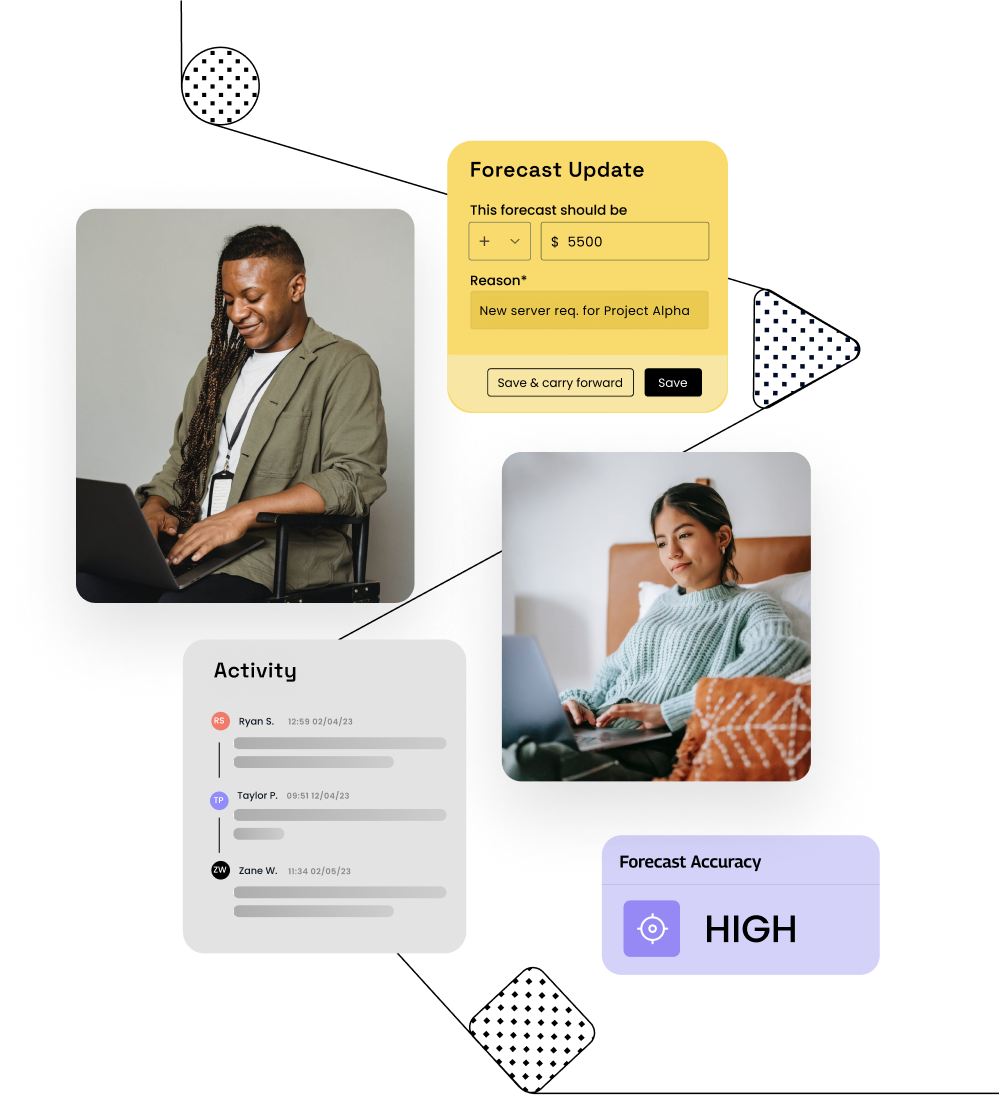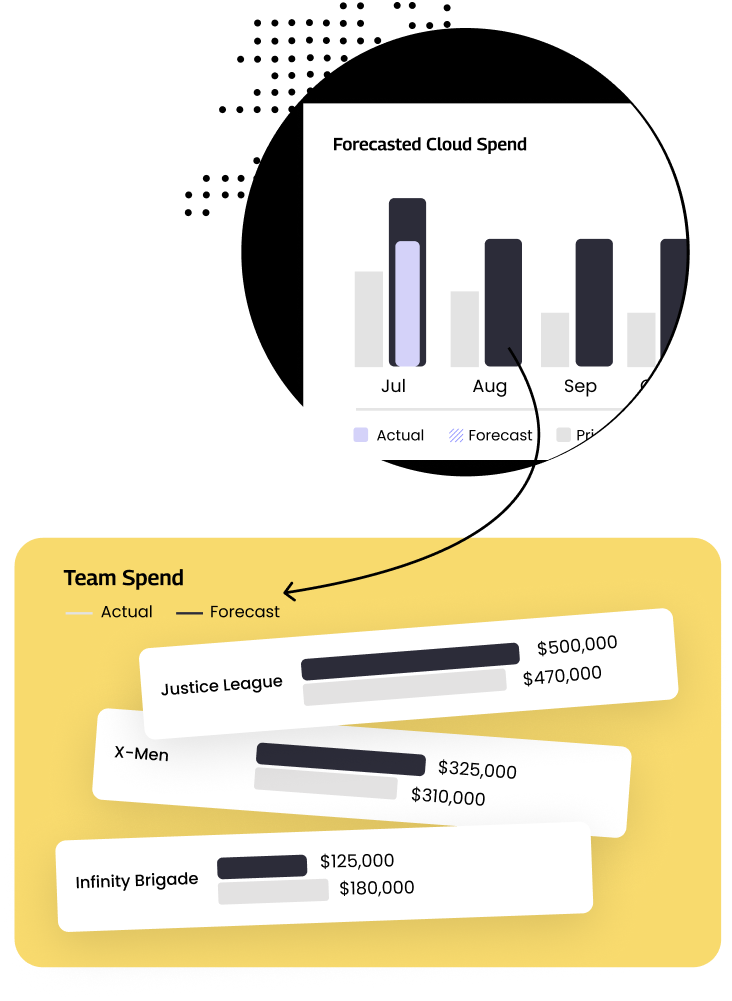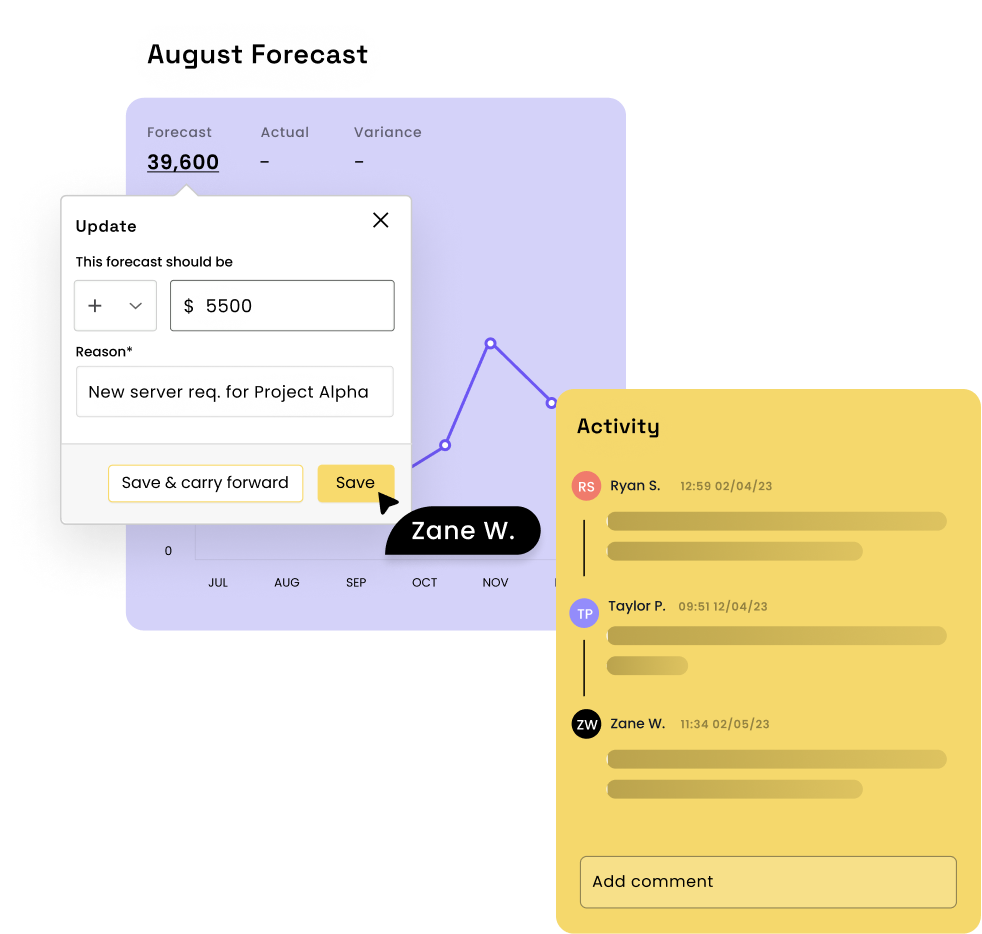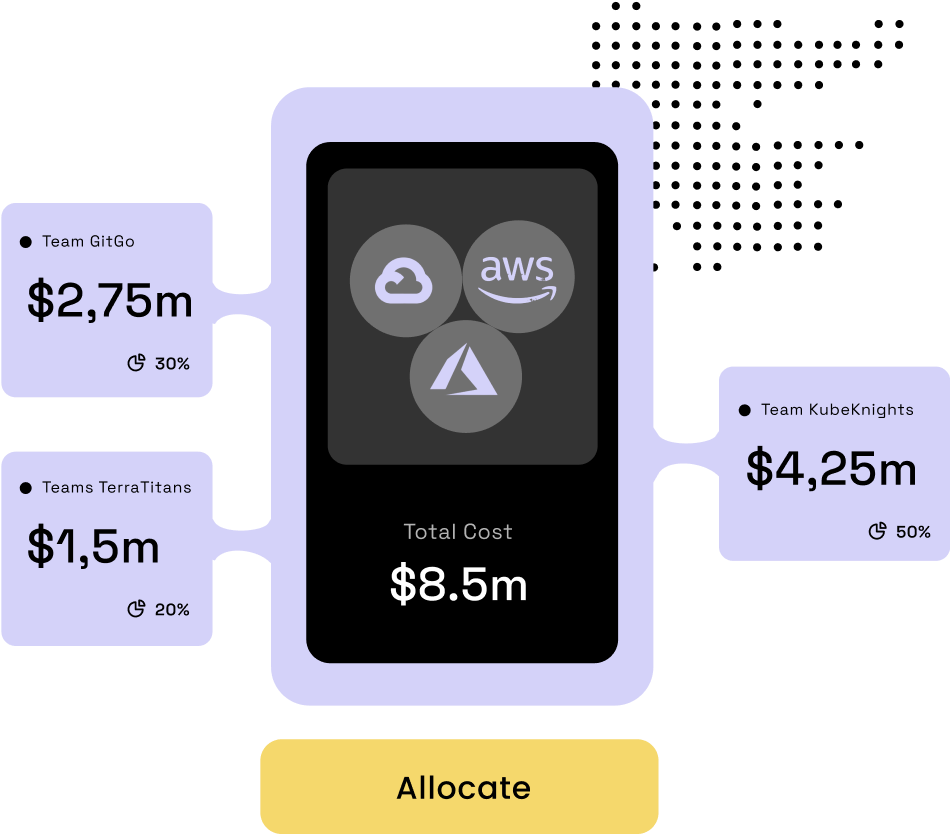Supercharge your Cloud Cost Planning with Team-Centric Forecasting
Built for Cost Owners and engineering teams, Cloud Forecasting drives visibility, control, and team ownership to your cloud spend for optimized financial planning.

Empowering Teams to increase Cost Predictability, Preventing Bill Shock.
Empower Efficiency with Forecasted Spend Insights
Harness the power of Cloud Forecasting to align disparate data sources, providing a unified view of anticipated cloud expenses. Drive cost improvement and resource allocation to bolster growth.

Maximize Budgeting with Agile Forecasting
Leverage Cloud Forecasting for dynamic, team-driven forecasting, boosting transparency and strategic planning. Utilize shared insights for effective cost control, aligning cost management with business objectives.

Boost Accountability with Team Cost Allocation
Foster a culture of ownership and financial responsibility through clear cost allocation with Cloud Forecasting. Assign cloud expenses to the appropriate teams, driving a sense of accountability and alignment with business goals.

Gain insights into Team-forecasted spend, anticipating bill shock before it occurs.
Give Finance and Engineering teams comprehensive insights into their anticipated cloud spend to enable proactive cost reduction.
Boost cost Efficiency
Understand spending trends to drive cost improvement.
Enhance Budgeting
Use accurate forecasts for effective resource allocation.
Empower Team Ownership
Equip teams with insights to manage their own cloud costs.

Streamline Planning with Agile Forecasting.
Empower engineering teams to update forecasts and explain changes, enhancing transparency and strategic planning.
Drive Agile Planning
Enable cost owners with up-to-date team forecasts and insights that fuel responsive financial planning.
Enhanced Transparency
Teams' explanations of spending forecasts align cost management with business objectives.
Collaborative Cost Control
Cost owners and teams collaborate effectively using shared insights from forecasts and comments.

Instil Team Accountability through Cost Ownership
Assign cloud costs to respective teams, fostering ownership, accountability, and an action-oriented governance culture.
Enhance Self-Accountability
Through clear cost allocation, teams gain awareness of their cloud usage, enhancing their accountability
Foster Financial Responsibility
Ownership of forecasts, coupled with regular reviews, promotes financial accountability and effective cost management.
Boost Business Accountability
Public recognition, gamification, and performance metrics align teams with business value, nurturing a culture of business accountability.

A FinOps Aligned Approach
- Team Centric
- Emphasis on Accountability and Ownership
- Continuous Improvement and Learning
- Cross-Functional Collaboration

FAQ
1. What is Cloud Forecasting?
Cloud Forecasting is a tool that helps teams understand and predict their cloud spending patterns. It gives teams the data they need to efficiently manage cloud costs and plan resource allocation. It's a proactive approach to managing cloud costs, providing a clear view of team's forecasted spending.
2. Why is team-based forecasting superior to traditional cloud cost management methods?
Team-based forecasting enhances cloud cost management by promoting accountability, transparency, and strategic alignment. Here's why it's superior:
- Accountability: Teams managing their own cloud costs encourages ownership, leading to more responsible spending.
- Transparency: Detailed tracking of each team's cloud usage allows for informed decision-making and better identification of cost-saving opportunities.
- Proactivity: Real-time forecasting enables proactive cost control, helping to avoid budget overruns.
- Strategic Alignment: Teams forecasting their own costs ensures that their technical efforts align with the organization's financial goals.
- Competition: Gamification elements foster a friendly competition among teams, motivating them to optimize their spending.
In essence, team-based forecasting with Cloud Forecasting creates a more responsible, proactive, and efficient approach to cloud cost management.
3. What strategies does Cloud Forecasting use to manage cloud costs?
Cloud Forecasting empowers teams with agile planning strategies to effectively manage their cloud costs. By providing comprehensive insights into team-forecasted spend, it enables teams to make informed decisions on resource allocation and optimize their cloud usage. This proactive approach to cost management fosters agile planning, allowing teams to align their cloud spending with business objectives and achieve optimal cost-efficiency.
4. How does Cloud Forecasting encourage financial responsibility within teams?
Cloud Forecasting promotes financial responsibility by enabling cost allocation, gamification, and collaboration. By assigning costs to teams, it fosters ownership and cost control. The gamification feature, which includes team rankings and recognition, motivates teams to manage costs effectively. The platform also encourages collaboration and knowledge sharing among teams, further reinforcing financial responsibility.
5. Can teams and cost owners collaborate on optimizing resource allocation using Cloud Forecasting?
Absolutely. Teams and cost owners work together in Cloud Forecasting to optimize resource allocation. Teams update and explain their forecasts, while cost owners review these updates and engage in discussions for efficient resource allocation.
6. How does Cloud Forecasting support cost efficiency and proactive budgeting?
Cloud Forecasting helps teams manage their cloud spend by assigning resources based on strategic tags. Teams forecast their costs and comment on any changes or discrepancies. Cost owners monitor these changes and provide feedback, especially when there are large alterations or budget deviations. The platform also instills a sense of competition among teams, encouraging them to accurately forecast and optimize their spend. This process helps align resource use with business objectives and fosters a culture of accountability.
